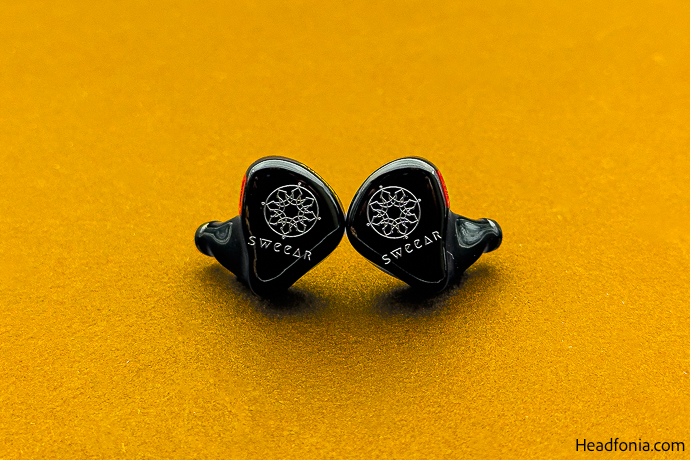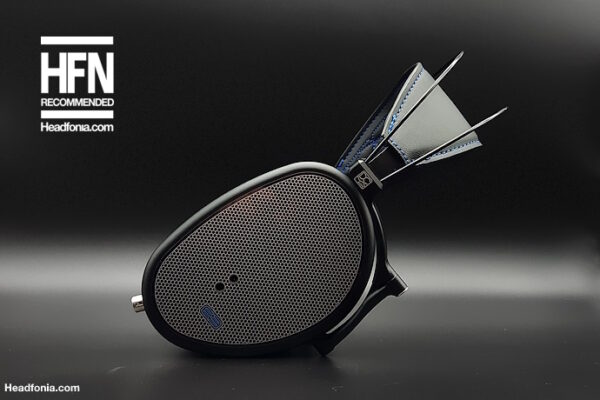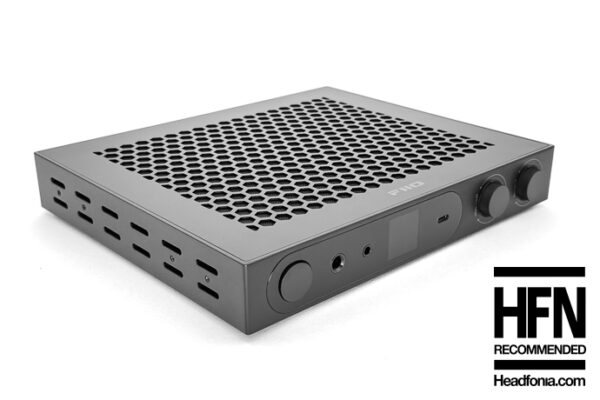SWEEAR Audio Aurora – Sound
The Aurora features a warm-neutral tonality with a fairly good tonal balance across the frequency spectrum. Its sound signature is both smooth and musical, yet it doesn’t compromise on detail. What stands out is its presentation: it’s remarkably easy-going. Whether you’re into jazz or EDM, the Aurora’s relaxed treble, punchy BA bass, and smooth midrange ensure a coherent listening experience.
The Aurora is distinctively musical. It’s surprisingly similar to Sennheiser’s legendary headphone, the HD650, offering hours of comfortable listening without fatigue. It may not have the technical prowess some might expect at its price point, but it fills a unique niche in the market. There’s no shortage of reference equipment out there, but few IEMs balance easy listening with a sound signature that’s both organic and technically sound. The Aurora’s warm-neutral, organic tonality is consistent no matter the genre. Let’s take a closer look.
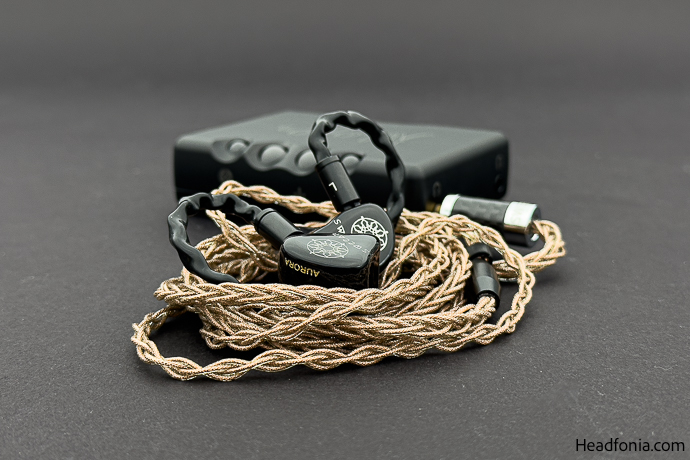
Bass
Aurora uses a total of four balanced armature woofers and is able to reproduce a big, bold bass. The bass’ power comes from the sub-region, as the subs feel more elevated compared to the midbass. This particular side of Aurora’s sound design enhances the perceived spaciousness, especially in vocals and natural instruments, while maintaining a good body and allowing a more seamless bass-to-midrange transition. The bass texture is commendable, and its tonality is both punchy and true to the track’s mastering. Moreover, the impact feels natural, and the control is excellent.
Unlike some of the drier sounding multi-BA IEMs, you don’t feel a deficiency when it comes to the lows with the Aurora. It feels and sounds natural across the region. It scales and adapts itself nicely based on the mastering. For example, with a track like Xinobi’s ‘Searching For’, it produces a powerful, impactful bass, and when you tune into something mellower, such as Ella Fitzgerald’s ‘I Aint Got Nothing But The Blues’, the bass scales down and let’s the natural instruments do their magic.
Midrange
The midrange of the Aurora is balanced, smooth, and delightfully warm. The upper midrange is controlled, and the extension is dialed back a little to provide a smoother experience throughout the region. There’s a slight dip from the mid-bass to the lower mids, but it doesn’t detract from the overall texture nor push back lower-mid based instrument presence in any noticeable way. In fact, the bass to midrange transition sounds very effortless and coherent to my ears. I honestly didn’t find the midrange particularly impressive, especially for the price, as to why it tends to over-smoothen some tracks that depend on the energy and excitement, such as the heavy metal genre. Oftentimes, I found these tracks a little too smooth for my taste, so mids, especially upper midrange, could have been tuned a tad more forward, in my opinion. The instruments’ thickness and body are perfectly balanced and do not feel particularly thick or thin. The Aurora presents them in a natural and organic way, and it reminds me of Sennheiser’s HD650 headphones in this regard, too.
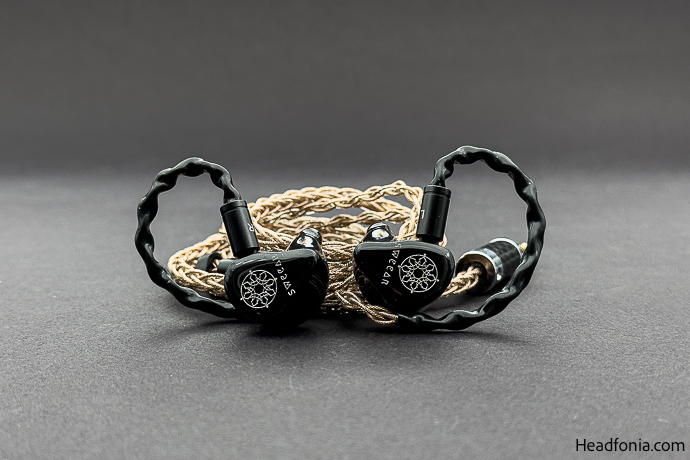
Upper midrange-based instruments are not rendered as clean and expansive as other flagship IEMs like the Vision Ears VE7. The smooth and musical nature of the Aurora exchanges the extension with ease of listening. It truly is an easy-to-listen IEM; you can listen to it ten hours straight without a hint of fatigue. As I said before, it fills a niche in the industry. There aren’t many IEMs that are this smooth and still maintain a proper technical capability. Of course, it is beneficial to remember that every tuning style has trade-offs in this industry, so it is up to you to explore what kind of signature you ultimately enjoy. The Aurora is not the perfect candidate for the audiophile who enjoys a highly dynamic and energetic sound signature. So if you prefer a more reference, brighter presentation, you should look elsewhere.
Treble
The treble region of the Aurora is well-done in my opinion. There is zero harshness in the treble region, yet cymbal, crashes, and percussion instruments sound clear and adequately present. That is something I rarely encounter in IEMs. It’s usually dialed down too aggressively, or it lacks refinement, thus sounding a bit lifeless. That is not the case with the Aurora, as it reproduces treble delightfully clean and smooth simultaneously. The treble’s resolution is also quite good, and this is one of the best aspects of the Aurora. It feels like a masterfully smoothed version of my Alpha 80 reference monitors with Focal’s signature aluminum magnesium dome tweeter. Maybe it’s not the most extended or most detailed treble I have heard before, but it has a natural and organic presentation with adequate extension. I honestly love the treble tuning of the Aurora. It sounds balanced and coherent, sounding neither too sharp nor too laid back and lacking in air.
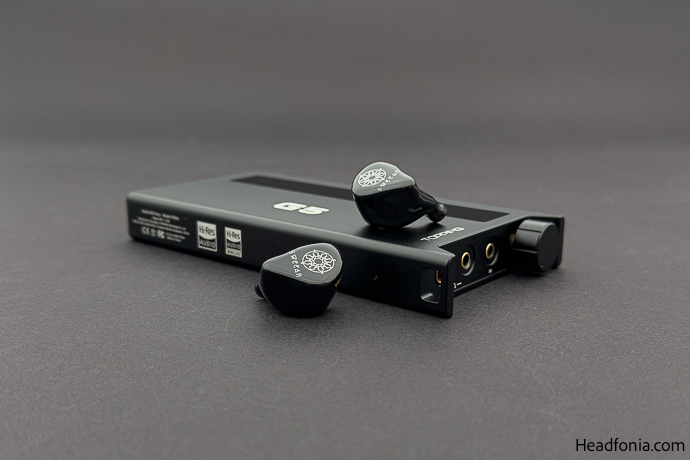
Technical Capability
The Aurora’s soundstage is fairly wide with good depth, and there is a good amount of space between the instruments; you don’t get a claustrophobic feeling at all. Aurora is adequately detailed without flooding your eardrum with details; it rather showcases them in a subtle, more natural way. The music flows effortlessly, with good resolution and tonal balance, as expected in this price range.
Usually, you can produce even more of a change in performance by moving from the stock cable to upgrade cables, but I believe that SWEEAR burned a hefty sum of time to find the perfect alloy for the Aurora. I am sitting here at my desk with nine upgrade cables of varying alloys, and I couldn’t find one surpassing the performance of the stock cable of the Aurora. The SPC stock cable delivers the best performance in terms of technical capability and timbre, and that’s it. On a side note, the Aurora is a very efficient earphone at just 10 ohms, and you won’t need anything special to drive it. This is one of the reasons why it is especially hard to find a good synergy between the aftermarket cables and the Aurora.
Source Synergy
The Aurora pairs nicely with reference-oriented gear. Notable mentions include Chord’s Mojo 2, the Hugo series, and DAC/AMPs from Topping and SMSL. These high-resolution sources enhance the Aurora’s technical prowess, elevating its resolution and transparency. Every piece of equipment tested, from robust DAC/AMPs to compact ones like the Moondrop Dawn Pro, drove the Aurora effortlessly. There was no discernible background hiss or noise floor with any of the DACs when paired with the Aurora.
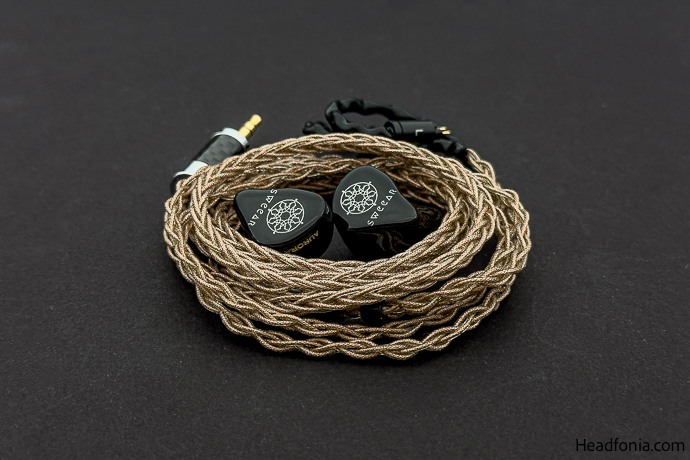
Chord Mojo 2
The Chord Mojo 2 stands out as a remarkable DAC AMP, shining in various facets. Paired with the Aurora, the sound is both resolving and expansive. Given that the Aurora comes with a 3.5mm cable, the Mojo 2 is an ideal single-ended source option. For those familiar with the Mojo 2, its FPGA EQ is a standout feature. With it, users can tailor the Aurora’s sound to their preference. Enhancing clarity is just a few adjustments away.
Topping G5
Priced at nearly half of the Mojo 2, the Topping G5 is a testament to the quality products emerging from the Chi-Fi industry. Its sound is immensely clean, and it offers ample power complemented by a impressive battery life. When paired with the Aurora, there’s a noticeable boost in perceived clarity. The G5 enhances the Aurora’s soundstage in both width and height and improves detail retrieval significantly. Given the Aurora’s efficiency, the low gain on the G5 suffices, extending the listening duration beyond the usual playtime of the G5.
Moondrop Dawn Pro
The Moondrop Dawn Pro, while much more affordable than the other mentioned DACs, is a analytical-sounding device that adds a touch of breath to the Aurora. It accentuates the upper midrange, allowing the Aurora to sparkle. For its price, the Dawn Pro’s performance is quite good. In terms of pure signature synergy, it might be the best budget portable option for the Aurora.
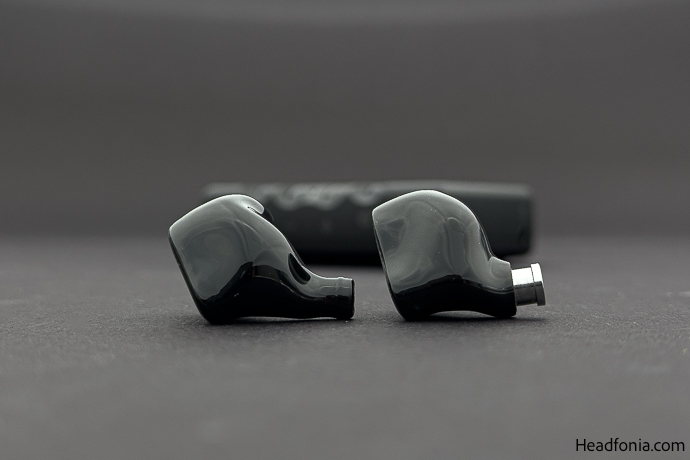
Conclusion
The Aurora, elegantly packaged, features a design that prioritizes both durability and ergonomic comfort for long listening sessions. Its sound signature, characterized by a warm-neutral tonality, seamlessly blends a punchy bass, smooth midrange, and refined treble. What truly sets the Aurora apart is its organic sound signature, offering a musical experience that’s both relaxing and immersive. While it may not be the most technically advanced in its price bracket, this smooth and easy signature fills a distinct niche in the market.
Pros
Unique Sound Signature
Effortless Presentation
Great Comfort
Cons
Build Quality could be better
Accessories are limited
Pricing could be more competitive
Page 1: SWEEAR Audio, The Aurora, Packaging & Accessories, Design, Build & Fit
Page 2: Sound, Low, Mid, High, Technical Capability, Source Synergy, Last Words





